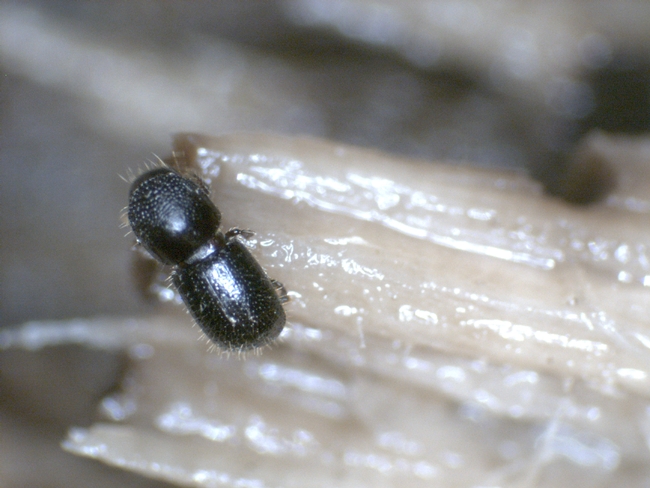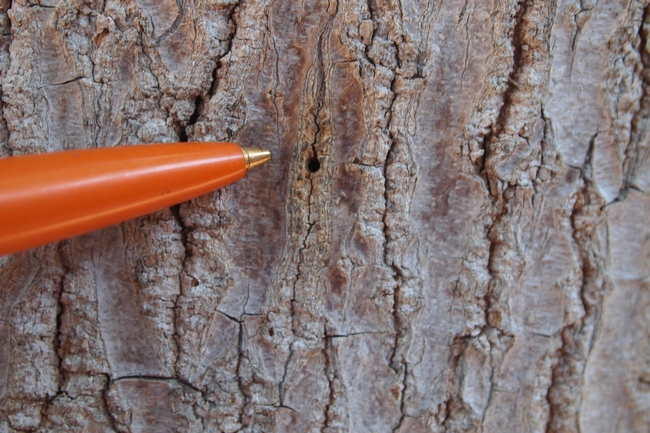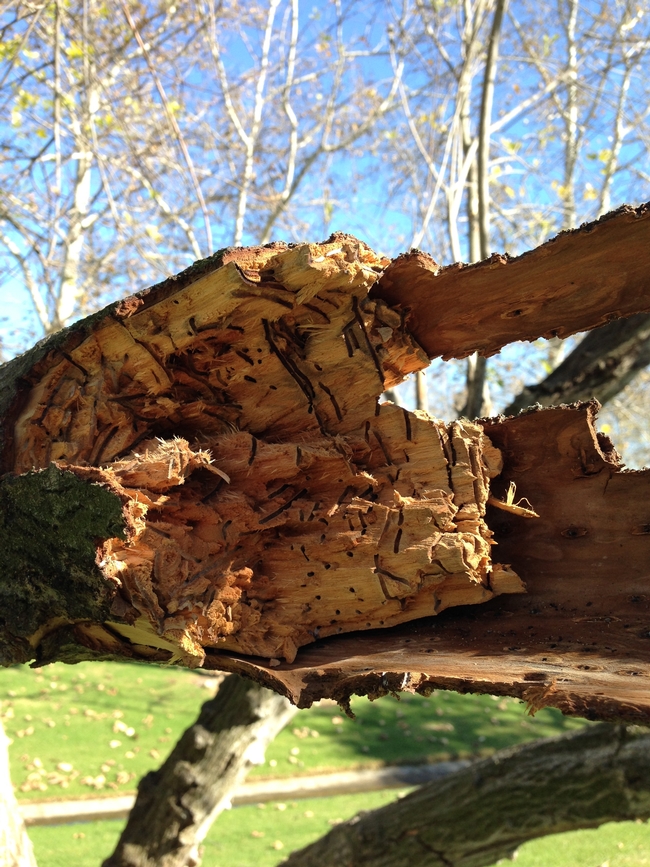When tiny tree-killing beetles first arrived in Southern California several years ago and began destroying urban and riparian forests, they raised widespread concerns among both tree experts and affected communities. More recently, invasive shothole borers have captured far less attention, and many people may think the pest threat is over. Unfortunately, it's not!
While significant progress has been achieved in invasive shothole borer research, surveying, trapping, and management programs, these beetles are still an ongoing threat to the state's urban and wildland trees. Continue reading to find out what you can do to be part of the solution to this invasive pest issue.
What are invasive shothole borers?
Invasive shothole borers (ISHB) (Figure 1) are sesame seed-sized beetles. They tunnel into trees and introduce a fungus that they use as their food source. As the fungus grows, it causes a plant disease called Fusarium dieback that leads to branch dieback, tree decline, and, in many cases, tree death.
The beetles and fungi can live and reproduce in a wide range of tree species including more than 65 types of trees found in California. The most highly susceptible trees include many species that are commonly used for landscaping like sycamores, some oaks, cottonwoods, and box elder. Invasive shothole borers can attack healthy, stressed, or diseased trees.
What's the problem?
Urban trees provide us with many benefits to our health and our economy. The trees around us reduce our stress levels, provide shade, allow for energy conservation, improve air quality, reduce stormwater runoff, and provide habitat for wildlife. It is important to protect them from invasive pests, like invasive shothole borers, which could potentially kill one out of three urban trees in California.
ISHB-infested trees can quickly become a public safety hazard. Trees with heavily infested branches can be especially hazardous. The combined damage of the fungal disease and the beetle's tunneling activity weakens the wood, causing limbs to break and fall (Figure 2). In addition, severely infested trees will become a constant source of beetles that can disperse and infest neighboring trees.
Where are they found?
These non-native beetles are now established in many areas of Southern California and the Central Coast. Female beetles are capable of flight over short distances, allowing the pest and its associated fungi to spread into new areas. Beetles can also be transported in infested firewood and green waste, leading to dispersal over much greater distances.
What to look for
Because they are very small and spend most of their lives inside their tree hosts, you probably won't see the beetles themselves, but there are several common signs and symptoms associated with their infestations: ?Beetle entry holes: When the beetles tunnel into the trees, they make small, perfectly round holes, each about the size of the tip of a medium ballpoint pen (Figure 3).
- Tree response symptoms: One or more of the following symptoms usually accompany the presence of entry holes (symptoms vary by the tree species): dark, wet staining; thick gumming; sugar-like buildup; or boring dust (resembles fine sawdust).
- Dieback: Dead or wilting branches can be a sign of a severe infestation. If you see dieback on trees, check for entry holes on the trunk or the branch collars.
What you can do
Several steps can be taken to prevent pest problems and manage infestations.
- Keep your trees healthy. Proper irrigation and maintenance will keep trees strong and help protect them from ISHB and other pests.
- Check your trees. Look for the common signs and symptoms listed previously. Regular monitoring ensures that infestations are managed early, before they cause dieback or tree death.
- Confirm suspected infestations using the detection tool on www.ishb.org. ?Know your management options. When possible, pruning infested branches is recommended. Low and moderately infested trees can be treated. You will need to contact a licensed professional to apply the treatments. Severely infested trees may require removal.
- Take care of green waste. The beetles can survive in cut wood for weeks or even months. Proper disposal of green waste includes chipping infested wood, followed by solarizing or composting the chips.
- Consult a professional. A certified arborist or pest control professional would be able to provide recommendations based on the conditions of your tree. Your County Agricultural Commissioner's office and UC Cooperative Extension office may have more knowledge about current ISHB monitoring and management programs in your area.
- Use locally sourced or heat-treated firewood. These beetles and other tree-killing insects often reach new locations by hitchhiking in firewood. Buy firewood where you will use it, and only buy the amount of firewood you need.
Visit www.ishb.org for more information about invasive shothole borers.
[Originally featured in the Summer 2022 issue of UC IPM's Home & Garden Pests Newsletter.]
Posted by - Associate Director for Urban & Community IPM/ Area Urban IPM Advisor
Attached Images:


